The Most Terrifying Fairy Tale Villains, Ranked
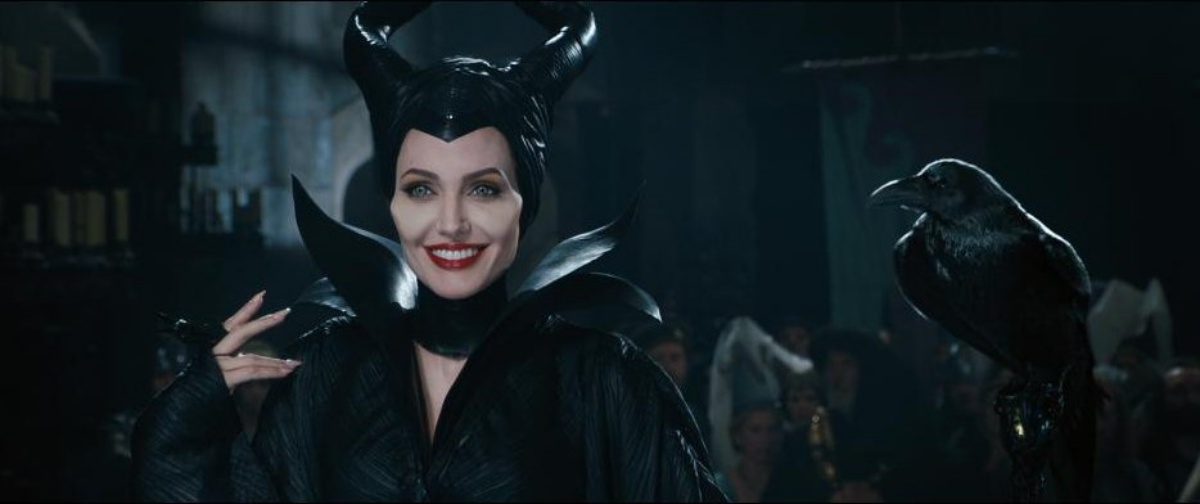
Many of us had favorite fairy tales that we read as children—some heartwarming, some horrifying, and some that were just downright questionable and dark when you look back. Fairy tales are generally defined as stories intended for children that “feature characters such as elves, goblins, wizards, and even, but not necessarily, fairies.” They are often traditional in that they are passed down from one storyteller to another (either written or orally) and are generally deeply rooted in magic.
Before getting into this list, I just want to say that I’ll be focusing on classic fairy tale villains for this one. I also chose and ranked these characters based on their backstories, motives, and on some level, complexity.
Captain Hook

Known for being Peter Pan’s archnemesis, Captain James Hook is an Eton College-educated pirate and the captain of the Jolly Roger. He’s scary, but his general lack of motivation makes him less horrifying than the others. Although he did lose a hand on account of Peter, this doesn’t seem to be the driving force behind Hook’s hatred for Peter Pan. The root of their feud seems to be that Hook wants to kill Peter (primarily) due to the latter’s cockiness. In other words, out of annoyance. Which…okay, yes, it’s evil to want to murder someone just because they’re kind of an annoying neighbor, but it doesn’t make us quite hide under the bed in terror.
Plus—there are several threads that have made rounds on discussion boards, through the years, that theorize that there’s probably more to Hook than we give him credit for. Peter does steal a lot of children, is Captain Hook…the hero?
6. Maleficent
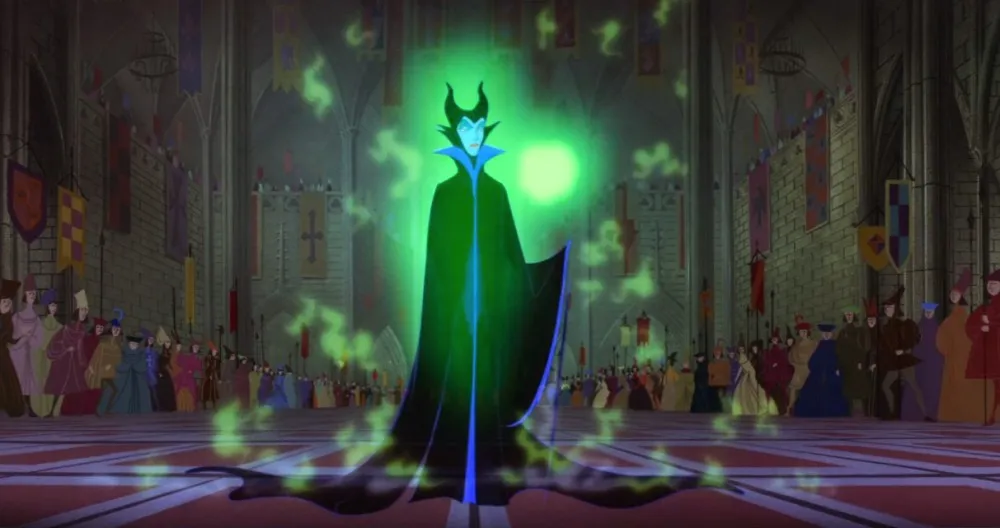
Otherwise known simply as the “Wicked Fairy Godmother,” Maleficent appears in both Charles Perrault’s Sleeping Beauty and in the Brothers Grimm’s retelling of the story, Little Briar Rose. She is unnamed in Perrault’s version, where there were seven invited fairies to stand as godmothers to Sleeping Beauty. She was the eighth fairy, and like in all adaptations, she was uninvited. In the Brothers Grimms’ take, there were twelve invited fairies, and Maleficent had been the thirteenth. Unlike the 2014 and 2019 Disney films, the original text doesn’t give Maleficent much of a backstory or redeeming arc—only that out of spite for not having been invited, she then cursed the princess in the story to prick herself on a spindle and drop dead (she probably had a better gift but had changed it at the last minute out of anger). As we all know, another of the fairies mitigates this by casting a spell for the princess to only fall asleep upon touching the needle. There are multiple fairy godmothers in fiction and various other fairytales but probably only a single wicked one, and so, Maleficent rightly deserves a spot on his list. That said, if someone had just sent the woman an invite, she would have just given a card with a Target gift certificate inside, so, you know…
5. Shere Khan

In Rudyard Kipling’s stories, Shere Khan is a Bengal Tiger with a non-working leg and is often called by his mother, in a derogatory manner, “Lungri” or “The Lame One.” This can be considered as his driving force to proclaim himself as the king of the jungle. Like in most of the adaptations, Shere Khan first comes across Mowgli after a failed attempt to hunt his family, which results in Mowgli being led astray, and eventually, adopted by a wolf pack. He is also guarded by a panther named Bagheera and a bear named Baloo. Shere Khan then bides his time as Mowgli grows up, still furious that he missed his kill.
Although, it could be said that Shere Khan simply believes that humans are a threat to his jungle and, by extension, he sees Mowgli as just that, the portrayal of him in Kipling’s stories is that he’s a bully with only one follower: Tabaqui, a coward jackal.
4. The Snow Queen
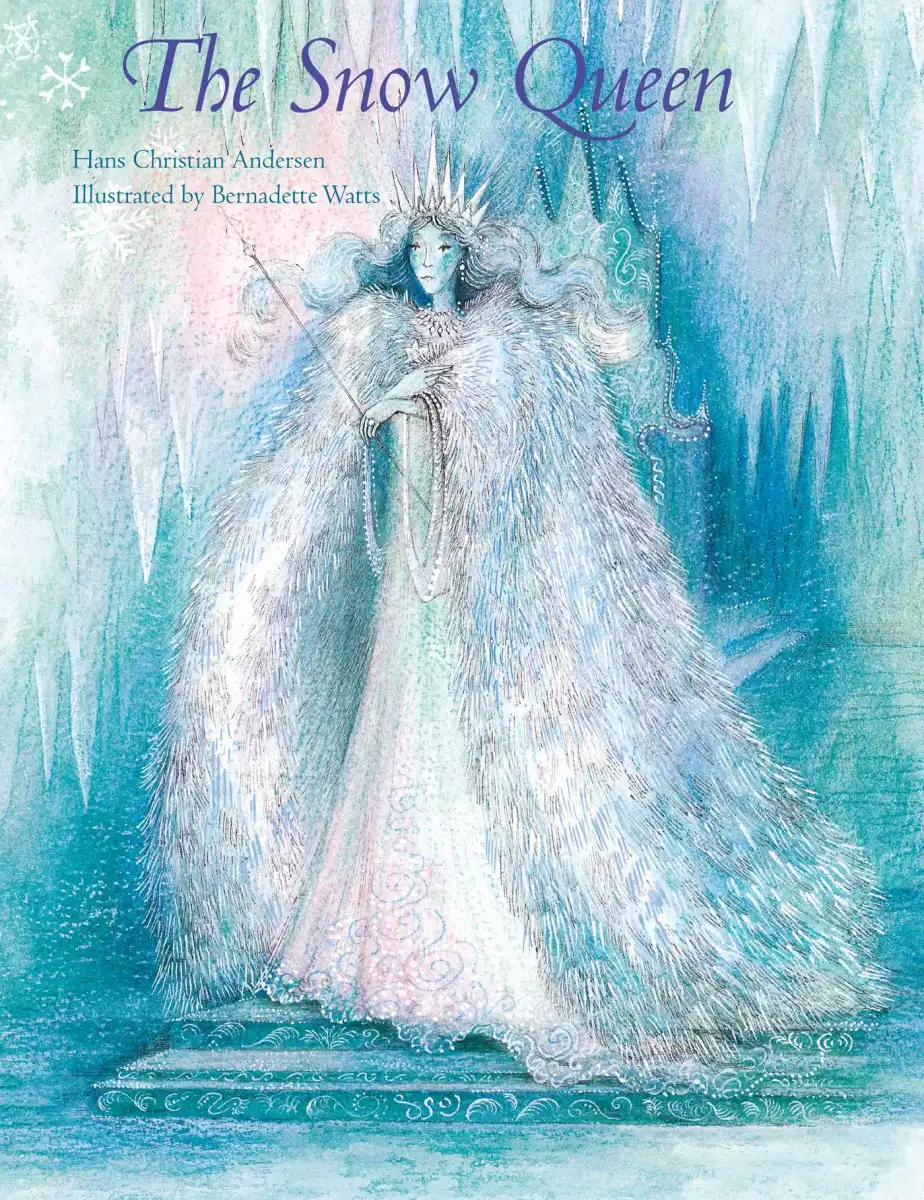
The Snow Queen is probably one of my childhood favorites. The Danish fairytale, by Hans Christian Andersen, is noted for being one of his longest and most acclaimed narratives. It follows two children, Kai and Gerda, who live next door to one another and grow up together. In this fictional world, a troll creates a magic mirror that distorts the appearance, making everything appear terrible. The mirror shatters into a million pieces that spread across the earth, with some splinters finding a way to the eyes and hearts of people. Meanwhile, Kai and Gerda learn the story of the Snow Queen, the ruler of what is called the snow bees (or snowflakes that look similar to bees). When clustered together, sometimes the Snow Queen makes an appearance, and one day, she does to Kai, as he is looking out a window. Afraid, the young boy pulls away. However, this changes one day after a splinter from the troll mirror finds its way to his heart, and when the Snow Queen appears before Kai once more, this time, he leaves with her. There’s definitely extra creepiness in the way she just appears, and her control over those who have a splinter of the mirror in them makes this villain especially…ice cold.
3. Rumpelstiltskin
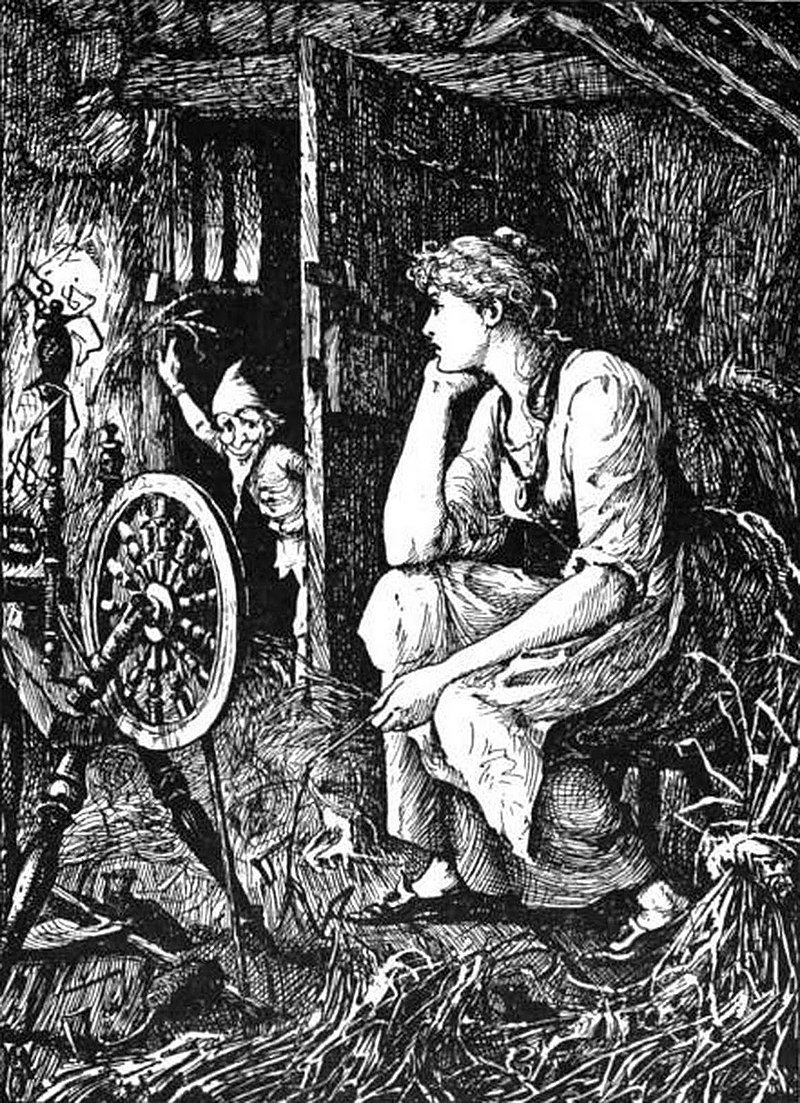
Rumpelstiltskin is a twisted but fair villain if you think about it. He appears before a miller’s daughter, who finds herself in a room full of straw that the king expects her to spin into gold, a situation her father got her into. Rumpelstiltskin helps her out three times. In the first instance, the girl pays with her necklace. On the second, her ring. However, on the third and final time, with nothing else left to give, Rumpelstiltskin demands her firstborn child. Desperate, the miller’s daughter agrees and probably hopes he will eventually forget, as she goes off and marries the king, but of course, Rumpelstiltskin doesn’t. When he comes to collect his dues, the girl, turned queen, reasons with him, and Rumpelstiltskin gives her another chance: he’ll let her off the hook if she manages to guess his name. True to fairytale fashion, she does guess his name, although one has to ask why she never asked for it the first time they met. Then again, he did magically appear out of thin air, so that bit probably distracted her. I like that he lives by a code, but also…what was he going to do with that baby? Raise it? Eat it? It’s unsettling.
2. Death’s Messengers

Death’s Messengers is probably one of the Brothers Grimm’s lesser-known stories and is often marked in books as ‘Tale Number 177.’ It begins with Death getting his ass handed to him, and a kind and carefree young man seeing him and lending him a hand. Once recovered, Death asks the man if he knows who he is. When the latter replies in the negative, Death introduces himself and tells the good samaritan that he spares no man and makes no exceptions. However, as a form of repaying his kindness, he would not take or attack the man “without warning” and instead send one of his messengers to let him know ahead of his reaping. Eventually, the young man does fall sick, but somehow, he isn’t scared. Rather, he is confident that he won’t actually die given death’s promise. When he finally does feel better, he gets up from his sickbed, only for Death to tap him on his shoulder. Confused, he asks Death if he has broken his word, only for the reaper to reply, “Have I not sent you one messenger after another? Did not fever come and strike you, and shake you, and throw you down? During the night, did you not lie there as if you were already dead?”
It’s a real jerky move. And the key takeaway here is that Death would have probably been a lawyer if he had to pick another job.
1. The Pied Piper
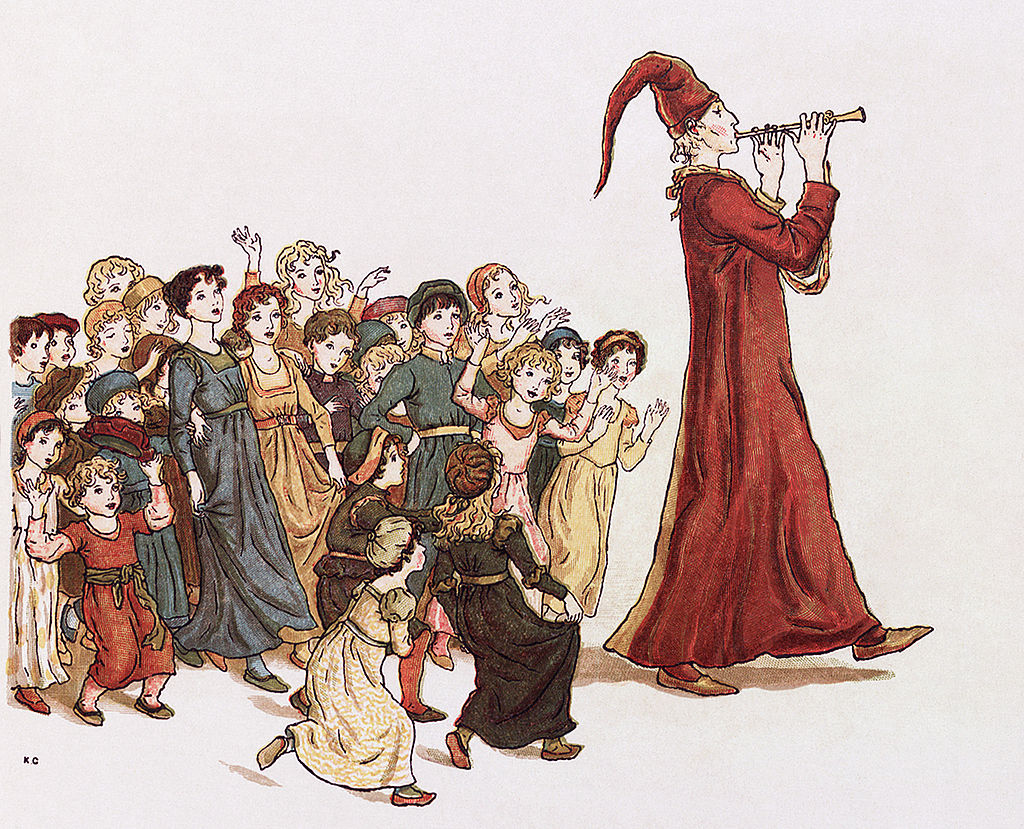
We all know how this one goes: in a small town called Hamelin, the townspeople hire the services of a Piper who promises to rid the area of its rat infestation. True to his word, he does so with the help of his flute—which he plays in order to lure all of the rats out. The rodents all fall into line, and, with the Piper at the lead, they run out of the gates of Hamelin. When the Piper returns to collect payment, the townspeople refuse and so, he again brings out his flute and plays a tune, this time luring out the townspeople’s children.
The fictional story ends there, but not the horror that comes with it, because this story traces its origins to a real historical mystery. To this day, the picturesque town of Hamelin stands and looks like something straight out of a fairytale. It’s a popular destination for travelers due to its colorful medieval streets and it houses evidence of the origins of the mythical Piper. Inscribed on a plaque on the stone facade of the (so-called) Pied Piper house are the words:
“A.D. 1284 – on the 26th of June – the day of St John and St Paul – 130 children – born in Hamelin – were led out of the town by a piper wearing multicolored clothes. After passing the Calvary near the Koppenberg they disappeared forever.”
Another piece of evidence comes in the form of a stained glass window in the town’s now-destroyed church. It depicts the figure of the Pied Piper, and just like in the story, being followed out of the town’s gates by a group of ghostly children. Spine-tingling.
As previously mentioned, no one exactly knows how these children disappeared and why the Piper took him (if he really existed), however, theories range from the migration and religious crusades to the medieval dancing mania. One thing is for certain, though: hundreds of those children disappeared. Because aside from the inscription and the now long-gone art, there is also an account in Hamelin’s records that say, “It is 100 years since our children left.”
That guy gives me the creeps.
(featured image: Disney)
Have a tip we should know? [email protected]
